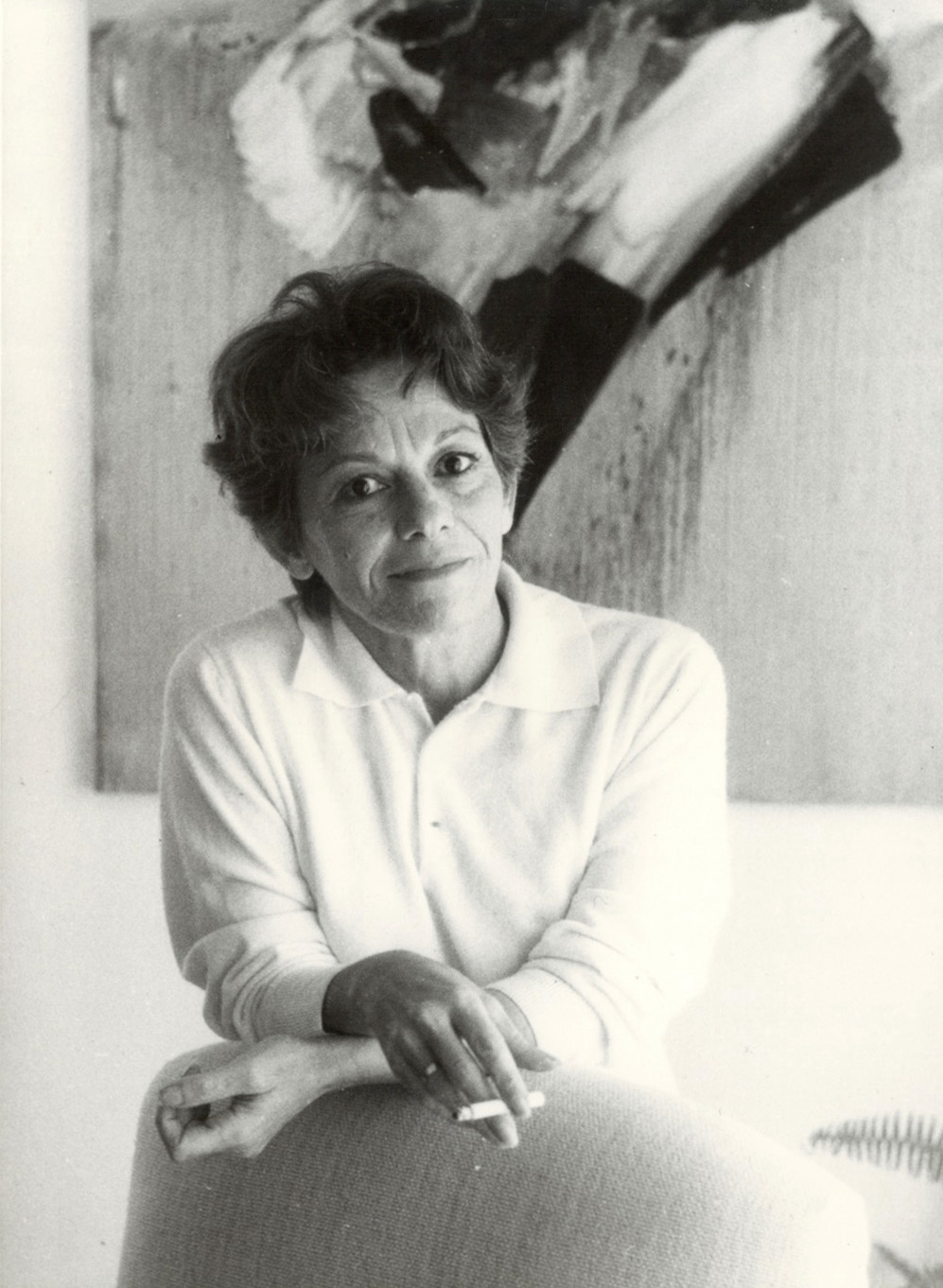News
Yvette Achkar, 1928–2024


One of the leading figures of postwar abstract painting in Lebanon, artist and art educator Yvette Achkar passed away on May 12 at the age of 96. Achkar exhibited regularly in Lebanon for five decades and participated in international biennales in Paris, Alexandria, São Paulo, and Baghdad. Recently her work was featured in touring exhibitions including “Taking Shape: Abstraction from the Arab World, 1950–1980s,” of works from the Barjeel Art Foundation’s collection in Sharjah, and “Beirut and the Golden Sixties: A Manifesto of Fragility.”
Known for her delicate and methodical process, Achkar often took over a month to complete one painting. Through her work she would process her inner world, emotions, and convey “rhythms” within her varied mark-making techniques of brushing, spraying, sponging and rubbing. Her later paintings leaned towards the minimal in their restricted use of color.
Born in Brazil in 1928 to Lebanese parents, Achkar was one of nine children, including her twin. At the age of ten her family moved to Beirut. Growing up, her original aspiration was to be a professional pianist; however, she was rejected from the Lebanese National Conservatory. Instead, Beirut-based Italian artist Fernando Manetti (1899–1964), who was a teacher at the art department of Beirut’s Académie Libanaise des Beaux-Arts (ALBA), encouraged her to pursue a career as a painter. In 1947 Achkar enrolled at ALBA where she met and trained with Paris-based painter Shafic Abboud (1926–2004), American artist and critic Helen Khal (1923–2009), and Lebanese artist Jean Khalifé (1923–1978), who were all influential in shaping the Lebanese art scene in the 20th century.
Under the tutelage of French artist Georges Cyr (1880–1964), as well as Manetti, at ALBA, Achkar began as a figurative painter. She soon moved toward more abstract forms. Her first solo exhibition, at Beirut’s Galerie La Licorne in 1960, became an instant success. Her artworks during this time were characterized by their geometric forms layered atop each other to create collage-like impressions on canvas.
Achkar swiftly showcased a second solo show at Beirut’s Galerie Alecco Saab in 1961, and a few months later she left for Paris on a French government scholarship to further develop her skills. She held subsequent solo exhibitions at Beirut's Gallery One in 1965 and 1970. Upon her return to Beirut, she became a studio art teacher at ALBA (until 2005) and the National Institute of Fine Arts of the Lebanese University (1966–88). She spent the years of the Lebanese Civil Wars (1975–90) in Lebanon where she continued to paint. She went on to cement her legacy to a new generation of artists including visual artist and Lebanese American University professor Greta Naufal, acrylic and gauze painter Aida Salloum, and mixed-media artist Rose Husseiny.
Many of her works are in the collections of the US State Department; the Sursock Museum, Beirut; Institut du Monde Arabe, Paris; the British Museum, London; The Jordan National Gallery of Fine Arts, Amman; and the Kuwait National Museum, Kuwait City. Over the years Achkar received numerous prizes, including from UNESCO (1959), the Baalbek Festival (1967), and the Ministry of Education and National Fine Arts, Lebanon (1975). Her artworks reached global audiences through her inclusion in group shows held in France, Italy, Yugoslavia, Austria, Germany, and the United States.
Yvette Achkar is survived by her sons François Sargologo, who followed in her footsteps to be an artist, and Stéphane Hampartzoumian. She and her son François exhibited together in 2009 at Galerie Janine Rubeiz in Beirut.
Camilla Alvarez-Chow is an editorial assistant at ArtAsiaPacific.







